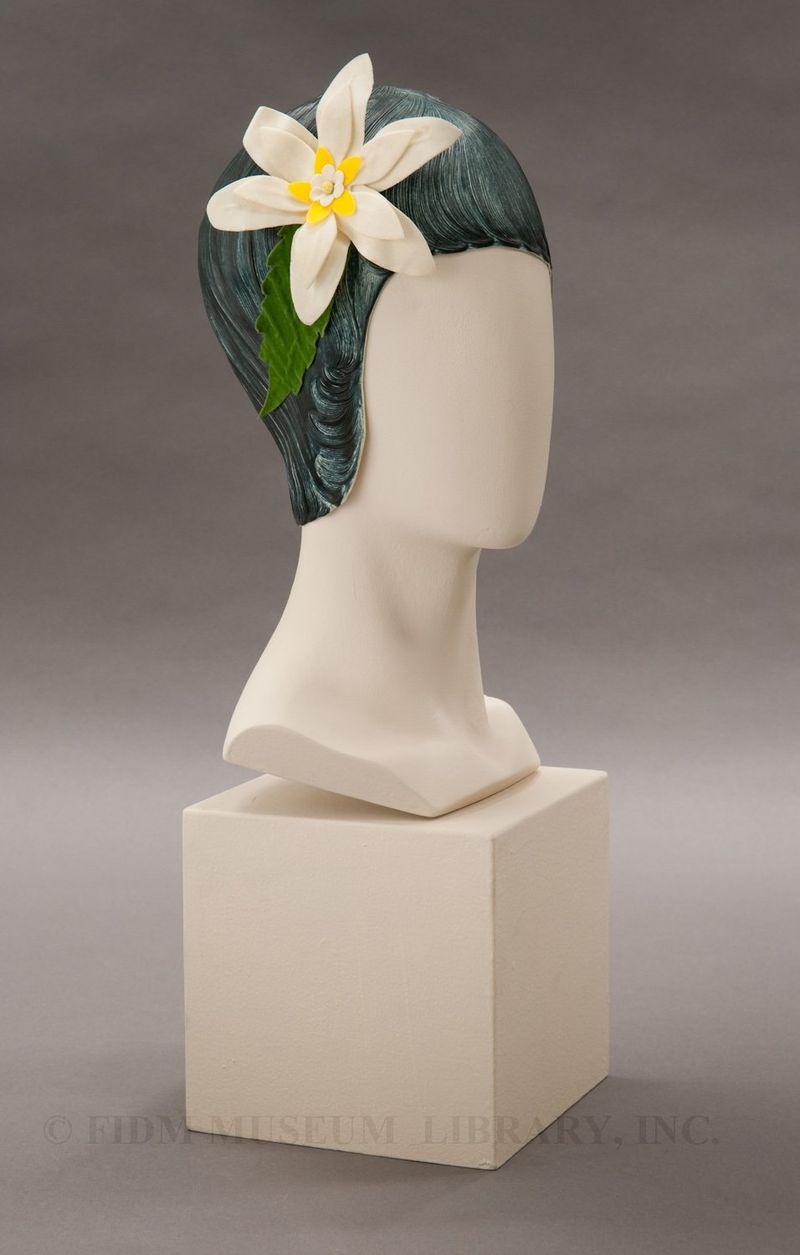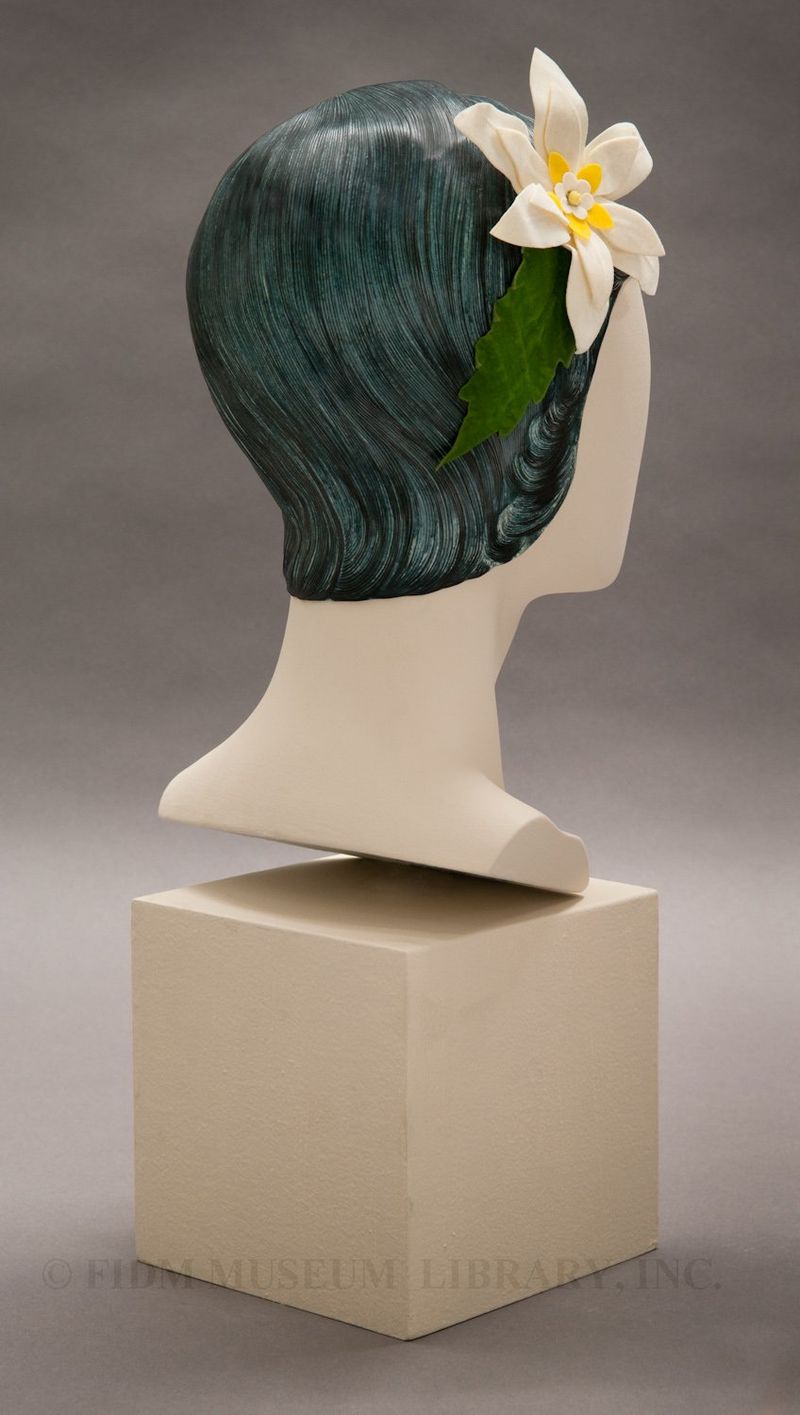It's the time of year when those of us in the northern hemisphere start dreaming about summer. Winter has gone on long enough and we're ready for warmer weather. Granted, the FIDM Museum is located in Los Angeles, so we can't complain too much. Still, I find myself repeatedly searching the terms "swimwear" and "sundress" in our collections database. A recent search for "bathing cap" revealed this late 1950s rubber bathing cap, textured and printed to resemble a woman's hairstyle and adorned with a flocked flower.
 Bathing cap
Bathing cap
Rubber with fabric flower and leaf
c. 1956
Museum Purchase
2003.5.36
In the 1950s, a bathing cap was an essential part of the swim wardrobe. Like the fanciful cap pictured here, these caps were often more fashion than function. In June 1957, the New York Times documented this trend in an editorial titled "Bathing Caps Establish a Fashion Beachhead." The article pictured a variety of whimsical bathing caps: blue with a black velvet bow, a two-tone daisy covered cap and a plain cap with vertical slits around the lower edge through which a scarf could be threaded. Given the materials used (silk scarves, velvet, etc.) it would seem that these bathing caps were for lounging poolside, not serious lap-swimming.
Many other styles of bathing caps existed during this era, including wig-like caps made of rubber cut into fringed ribbons resembling hair. One 1962 New York Times advertisement described an "aqua wig," a rubber bathing cap covered in synthetic hair "that needs no resetting when wet."1 Bathing caps, swimsuits, beach towels and other swim accessories retailed from seasonal shops like Saks Fifth Avenue's Sea & Shore and Lord & Taylor's Sand Bar. For the truly coordinated woman, swimwear manufacturer Cole of California offered 'Toe Beaux,' rubber "Tahiti-inspired flowers" to be worn on the toe and coordinated with Cole of California's range of bathing caps.
Though bathing caps have existed since at least the 19th century, when women began bathing for both recreation and health, they reached their most whimsical forms in the late 1950s and early 1960s. To some extent, the apparent popularity of bathing caps in this period was probably an extension of the belief that a well-dressed, proper women was obligated to wear a hat when outside the home. The bathing caps of the late 1950s/early 1960s can also be situated within the economic prosperity of post-World War II North America. In the 1950s, widespread economic prosperity enabled many more Americans access to vacations both domestic and foreign. Dressing for vacation or leisure time became an important expression of this newfound prosperity. A complete swimsuit ensemble, including a bathing cap, wrap and totebag, was simply a way to demonstrate economic well-being through complete adherence to the leisure wardrobe.
1 "Bathing Cap Also a Wig." New York Times 19 June 1962: 25.



Great 1950s fashion short featuring bathing caps here: http://bit.ly/qtPZdP.
have you ever seen a more perfect bathing cap in your entire life?!